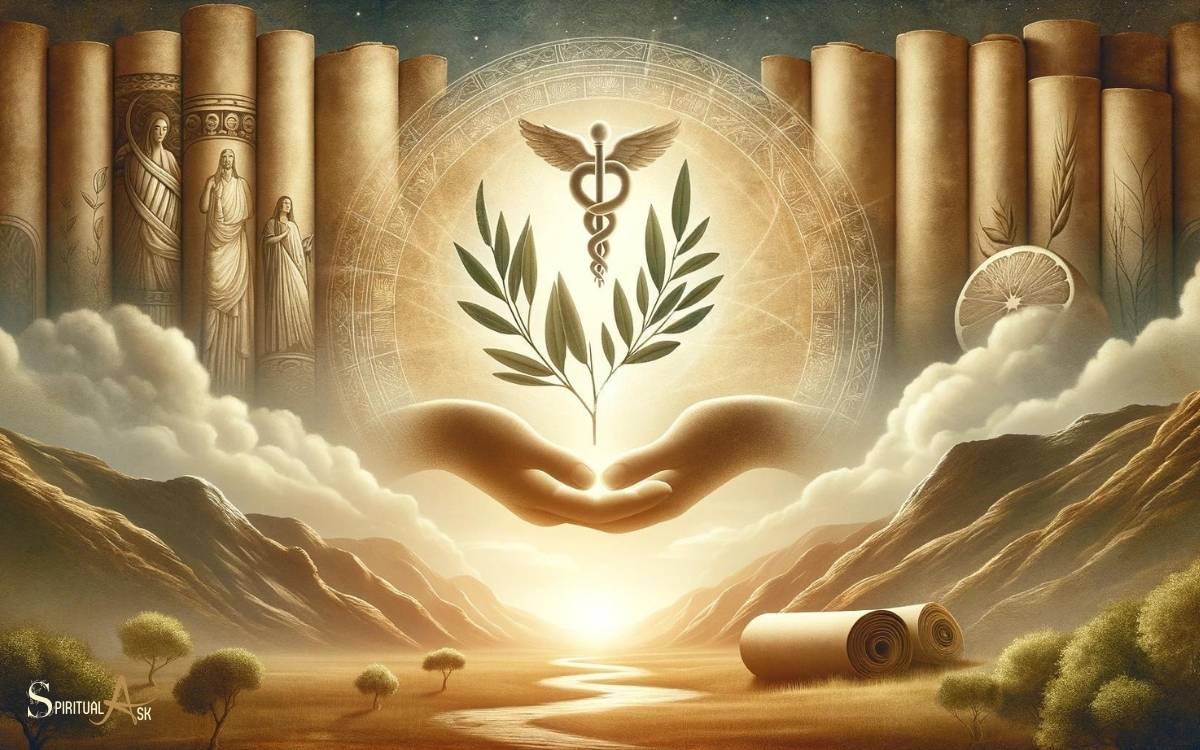Physical and Spiritual Healing in the Bible: Explain!
The Bible references both physical and spiritual healing, showcasing various accounts where individuals are healed by divine intervention or through the faith and prayers of others.
Spiritual healing often encompasses the forgiveness of sins and the restoration of one’s relationship with God, while physical healing involves the miraculous alleviation of illnesses and injuries.
In the context of the Bible, healing is a recurrent theme that signifies the power and compassion of God.
There are numerous instances in both the Old and New Testaments where healing is a sign of God’s mercy and sovereignty:
Physical Healing: This is evident in stories such as Jesus healing the blind, lepers, and even raising the dead. These acts were seen as both literal and symbolic of God’s ability to bring life and wholeness.
Examples include:
Spiritual Healing: The Bible frequently alludes to spiritual healing in terms of forgiveness and redemption. It emphasizes the importance of healing one’s inner self, often portrayed as more significant than physical healing. Spiritual healing through Christ is often depicted as the pathway to true peace and restoration, offering a renewed relationship with God. This transformative process allows individuals to shed the weight of sin and embrace a life filled with grace and purpose. By turning to Him in faith, believers find solace and hope, experiencing a deep healing that transcends the physical realm.
Examples include:
Both types of healing illustrate the holistic approach the Bible takes towards human well-being, addressing both the physical and spiritual aspects of health.
Whether it’s the miraculous recovery of the blind or the soul-cleansing power of forgiveness, the Bible’s narratives of healing reflect a deep connection

Key Takeaway
Healing in the Old Testament
Discussing healing in the Old Testament reveals the profound significance of physical and spiritual well-being in biblical teachings. Throughout the Old Testament, healing is often portrayed as a sign of God’s mercy and compassion. Whether it be through miraculous interventions or the use of natural remedies, the concept of healing is deeply intertwined with the spiritual power of God. In fact, the phrase ‘spiritual power healing‘ is evident in many stories of miraculous healings carried out by prophets and other righteous individuals. This demonstrates the belief in the divine ability to restore both physical and spiritual well-being.

The Old Testament depicts healing as a crucial aspect of God’s compassion and care for His people. It portrays instances where individuals sought healing through faith and prayer, emphasizing the belief in divine intervention to restore health.
One such example is the story of Naaman, a commander who suffered from leprosy. His healing came not from elaborate treatments, but from following the prophet Elisha’s simple instructions, showcasing the power of faith and obedience.
These narratives not only illustrate the physical aspect of healing but also underscore the interconnectedness of physical and spiritual well-being.
The Old Testament thus lays the foundation for understanding healing as a holistic concept encompassing body, mind, and spirit in the biblical context.
Miracles of Physical Restoration

I’ve witnessed miraculous instances of physical restoration in the Bible. These accounts of divine intervention are truly awe-inspiring and offer hope to those facing physical ailments.
The stories of miraculous physical restoration in the Bible include:
- The healing of the paralyzed man by Jesus, who not only restored his ability to walk but also forgave his sins.
- The restoration of sight to the blind beggar Bartimaeus, who received his vision after encountering Jesus.
- The raising of Lazarus from the dead, where Jesus restored life to a man who had been dead for four days, bringing immense joy to his sisters and the onlookers.
These examples of physical restoration serve as powerful demonstrations of God’s compassion and ability to bring about miraculous healing.
Jesus’ Healing Ministry
Jesus’ healing ministry, which is intricately connected to the miraculous instances of physical restoration previously mentioned, showcases the profound impact of his compassion and divine power on those in need.

Throughout the Gospels, we see Jesus healing the sick, giving sight to the blind, making the lame walk, and even raising the dead. His ministry was not confined to physical healing alone.
Jesus also addressed the spiritual and emotional needs of people, offering forgiveness, hope, and restoration.
His acts of healing were not just about alleviating physical suffering; they were also meant to demonstrate God’s power and love, pointing to the coming of the kingdom of God.
Jesus’ healing ministry serves as a powerful example of compassion and the tangible expression of God’s love for humanity.
The Power of Faith and Prayer
When considering the power of faith and prayer in the context of physical and spiritual healing, it is essential to recognize their integral role in the biblical accounts of miraculous restoration.

The Bible is replete with instances where faith and prayer led to profound healing and transformation.
Personally, I have felt the immense impact of these spiritual practices in my own life, leading me to believe in their undeniable power.
Reflecting on this, I am reminded of:
- The overwhelming sense of peace and comfort that comes with entrusting my worries to a higher power.
- The profound strength and resilience that faith instills in the face of adversity.
- The unexplainable but undeniably real sense of hope and renewal that accompanies earnest prayers.
These experiences serve as a testament to the profound influence of faith and prayer in navigating life’s challenges.
Wholeness of Body and Spirit
As I explore the concept of wholeness of body and spirit in the context of physical and spiritual healing, it is evident that a deep interconnectedness exists between our physical well-being and our spiritual state.

In the Bible, the idea of wholeness encompasses not only physical health but also spiritual vitality. When we are unwell, it can affect us spiritually, leading to feelings of despair or hopelessness.
Similarly, when we are spiritually distressed, it can manifest in physical symptoms. Therefore, achieving wholeness involves addressing both our physical and spiritual needs.
This can include seeking medical treatment for physical ailments as well as engaging in practices that nourish our spiritual well-being, such as prayer, meditation, and fostering positive relationships.
Ultimately, the pursuit of wholeness entails caring for both our bodies and our spirits, recognizing the intricate connection between the two.
Conclusion
Physical and spiritual healing are intertwined, weaving a tapestry of restoration and wholeness. From the miraculous healings in the Old Testament to Jesus’ ministry of compassion and restoration, the power of faith and prayer is evident.
It’s a symphony of body and spirit, a dance of renewal and rejuvenation. The pages of the Bible resonate with the harmonious melody of healing, offering hope and transformation to all who seek it.






